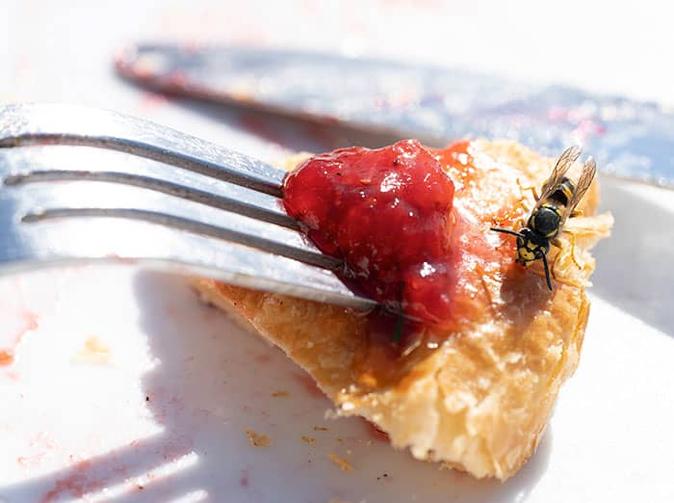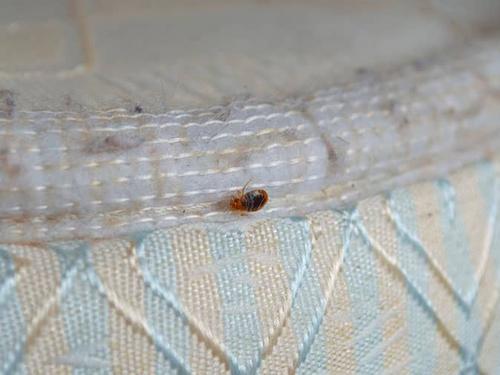Are You Seeing More Wasps & Other Stinging Insects Lately?
Late summer in Denver, Boulder & NoCo means more chances of stinging insect encounters
Although the dog days of summer have come and gone, there are still plenty of days left in August and you may have noticed there’s more stinging insects out and about right now. Sure, yellow jackets, paper wasps, and other stinging insects have been a pest problem since spring, but in late summer and early fall they really amp up activity and even become more aggressive. In this blog post, we’ll look at what causes this behavior shift, where to look for nests, the risks associated with stinging insects, and finally, how you can protect your family and home from painful stings and property damage.

Why stinging insects are more active (and aggressive) in August
Stinging insects, including wasps, hornets, and yellow jackets, tend to become more of a problem for Colorado homeowners in August and late summer for a few reasons.
Colony maturity
By late summer, stinging insect colonies have typically reached their peak size. This means there are more individuals in the colony, which can lead to increased competition for food, space, and other resources. This heightened competition can make the insects more defensive and aggressive.
Foraging & feeding
This is the time of year when stinging insects are focused on gathering food to sustain their growing populations. As natural food sources start to deplete due to seasonal changes, insects may become more aggressive when foraging for nectar, pollen, and other food sources. In fact, they may even start to rely on soda and sugary drinks, as well as other people food for their carbohydrate needs.
Nest protection
Stinging insects have invested a significant amount of time and effort into building and maintaining their nests. As the colonies mature, they become more protective of their nests and young, which can lead to more aggressive behavior when they perceive a threat in the vicinity of their nest.
Where do yellow jackets and other stinging insects build their nests?
Stinging insects usually build nests in areas that offer protection from the weather and that are close to food sources. Common nesting sites vary by species, but include:
- Abandoned rodent burrows
- Holes in the ground
- Trees, shrubs & bushes
- Hollowed out logs
- Loose soil
- Cars, trucks, lawn tractors & boats
- Eaves & roof overhangs
- Window & door frames
- Wall voids
- Attic rafters
- Crawl spaces
- Sheds
- Under decks, joists, or railings
- Porch ceilings
- Patio furniture
- Swing sets
- Gas grills
Health risks and property damage associated with wasps & hornets
Yellow jackets, paper wasps, and baldfaced hornets can pose health risks to humans due to their ability to deliver painful stings and potentially trigger allergic reactions and can even prove fatal for some individuals.
When wasps and other stinging insects nest in a wall void, behind siding, or in another spot inside a home, they can create damage. Nests can absorb water and create damp conditions that can lead to mold, rot, and eventually wood damage.
How to prevent stings from yellow jackets & others
It’s important to use caution when spending time outdoors in areas where these stinging pests are likely to be and especially if there’s a nest nearby. To prevent stinging encounters with yellow jackets, wasps, and hornets, our team of Colorado pest control pros recommend:
- Sealing off any potential entry point on the outside of your home
- Repairing holes in roofs
- Fixing siding that is gaping open or otherwise compromised
- Keeping food and drinks covered and cleaning up crumbs and spills promptly when eating outside
- Storing trash in outdoor cans that have tight-fitting lids
- Harvesting the garden regularly
- Picking up ripe or rotting fruit
- Trimming back tree branches, shrubs, and bushes
- Avoiding areas where you know stinging insects are active
- Leaving nests undisturbed when you find them
What is the best way to get rid of stinging insects?
If you’ve found a wasp nest behind your siding, have mowed over a yellow jacket nest in the lawn, or have discovered stinging insects inside your home or buzzing about too close to your family, do not attempt to remove a nest on your own and make sure your family steers clear of any stinging insect activity. Rather than risk harm to you and your loved ones, contact EnviroPest straight away!
Contact EnviroPest for relief from stinging insects
A locally operated pest control company serving Denver, Boulder, Colorado Springs, and Loveland, as well as communities throughout Northern Colorado, EnviroPest offers effective pest control services for that eliminate the threat these pests pose.
In fact, our home pest control plan not only targets ants, spiders, and other common house-infesting pests, it includes treatment for stinging insects. Check out the plan features below or simply give us a shout!
Colorado's Choice SMART Service
- Year-Round Pest Protection
- 4 Seasonal Services
- Covers 30+ Pests
- Free Re-Treat Service
- Rodent Control
- 24/7 Digital Rodent Monitoring

Colorado's Choice Smart Service
Our Colorado's Choice Smart Service is the most comprehensive home pest control plan EnviroPest targets 30+ pests and includes four seasonal visits and 24/7 digital rodent monitoring.
Pests covered under the Colorado's Choice Smart Service includes:
- Ants (Carpenter ants, odorous house ants, pavement ants, sugar ants)
- Beetles
- Centipedes
- Earwigs
- Mice
- Rats
- Spiders (House spiders, rock spiders, wolf spiders, black widow spiders)
- Wasps (Baldfaced hornets, paper wasps, yellow jackets)

Testimonials
GETTING STARTED IS AS EASY AS 1-2-3
REQUEST FREE ESTIMATE
Pest Solutions For Homes & Businesses
We understand that pest problems can be unsettling and frustrating, but the solution shouldn't be. For over 55 years, we've been helping folks right here in Colorado take care of ants, spiders, mice, mosquitoes, wasps, bed bugs, bats and most other creepy crawly things. We'll get there fast to solve the issue quickly and affordably - Guaranteed.



